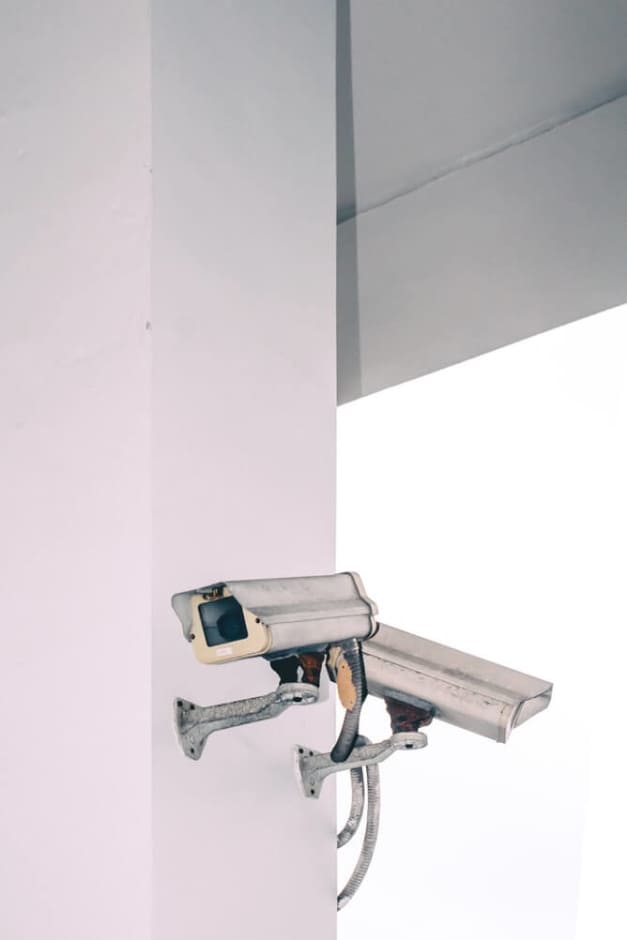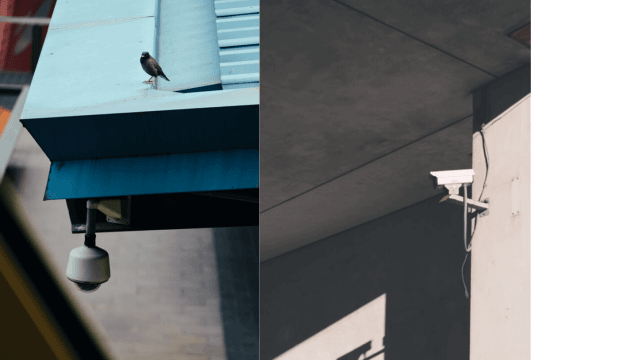Dome Camera: The Pros #
Dome cameras get their name from their dome-shaped structure. These security cameras are designed to withstand all elements, both inside and outside. Their construction allows for the camera to work even in low-light or no-light settings due to the built-in infrared LEDs. All cameras have the ability to send video signals over the Internet so an owner can access the footage at any time. Below are some advantages of installing dome security cameras.

Variety and Flexibility #
The dome security camera offers variety in terms of shape, size, and angle. Some cameras are packed with night vision while others have pan-tilt-zoom features and motion sensors. These cameras can be placed practically anywhere, from cross-roads to parking lots, to someone’s backyard. One huge selling point of dome cameras is their massive area coverage options. The wide-angle of the dome camera provides a maximized viewing area and, if equipped with the proper sensors, can act as panoramic surveillance cameras.
Discreetness #
Due to their simple design, dome security cameras tend to be unnoticeable. Many users install these cameras at front doors, churches, or other places where visitors may not anticipate surveillance cameras. The low profile nature also comes in handy when trying to avoid vandalism. Some dome security cameras are vandal-proof, but for those that aren’t, the inconspicuous design does prevent some crime. The camera lens is protected, making the camera more durable. People tend to not be able to tell which direction the lens of the camera is pointing, thus adding to its discreet style and hopefully deterring criminals with a sense of uncertainty. The minimalist cameras tend to blend in with surroundings, making the security system seem less intrusive.
Bullet Cameras: The Pros #
Bullet cameras are named for their distinct cylindrical shape, resembling a bullet. These cameras act as a visible deterrent and research has shown that the presence of bullet cameras makes a property less desirable to a criminal. These security cameras operate both indoors and outdoors and have features such as a small lip on the tip of the lens to protect against any glare or other weather. Below are the main advantages of installing a bullet camera.

Long-range vision #
Bullet camera range is much longer than other cameras which positions them as ideal options for large areas such as parking lots or backyards. Their field of view is fairly narrow, yet the shape of the camera allows for a larger lens on the bullet camera than a dome camera. Long-distance viewing is the bullet cameras main strength. The camera’s narrow viewing angle allows the camera to see clearly at farther distances, similar to how a pair of binoculars work. Often, the cameras are good at capturing clear images of people and license plates at great distances, making it easy for someone to identify such things if they look back through the footage.
Easy Installation #
The bullet camera requires a simple wall mount and is much easier to install than a dome camera. The easy installation ensures the camera lasts a while because the process is difficult to do wrong. Some people forget to tighten the glass on the dome cameras which results in moisture getting inside, something that is not an issue with bullet cameras.
Dome Camera vs. Bullet Camera: The Differences and How to Choose #
While bullet cameras are known for a longer range, dome cameras have the ability to offer a wider view angle. The disadvantage of bullet cameras mainly relates to vandalism. Unlike dome cameras that have a protective cover for the camera inside, bullet cameras can be easily altered to be pointing in another direction, thus recording a different area than where a crime may be occurring. It ultimately comes down to a user’s need for a security camera. Both cameras will operate well in any location, however, the bullet camera will work better for a long-range video while the dome camera will work better for shorter distances but a wide-angle.
Both dome and bullet cameras include LEDs that allow the camera to see in dark or low-light situations. The same goes for the weather. Because both cameras can be used inside or outside, they both have the capability to withstand any harsh weather conditions or extreme temperature. In terms of wear-and-tear, both cameras are designed to last for a long time, but bullet cameras are more susceptible to spider webs or bird nests due to their design. On the other hand, dome cameras need to be monitored too because the glass attracts both dust and fingerprints. Depending on location, bullet cameras tend to work better for outside locations as they can be attached to any wall as opposed to a ceiling which dome cameras require. Even if there is a space to put a dome camera outside, there’s a likely chance that half of the camera’s view would be a wall, thus not utilizing the camera’s potential.
For more information about security cameras, check out our solutions page and for a better overview of the best security camera brands, learn more with our article.




